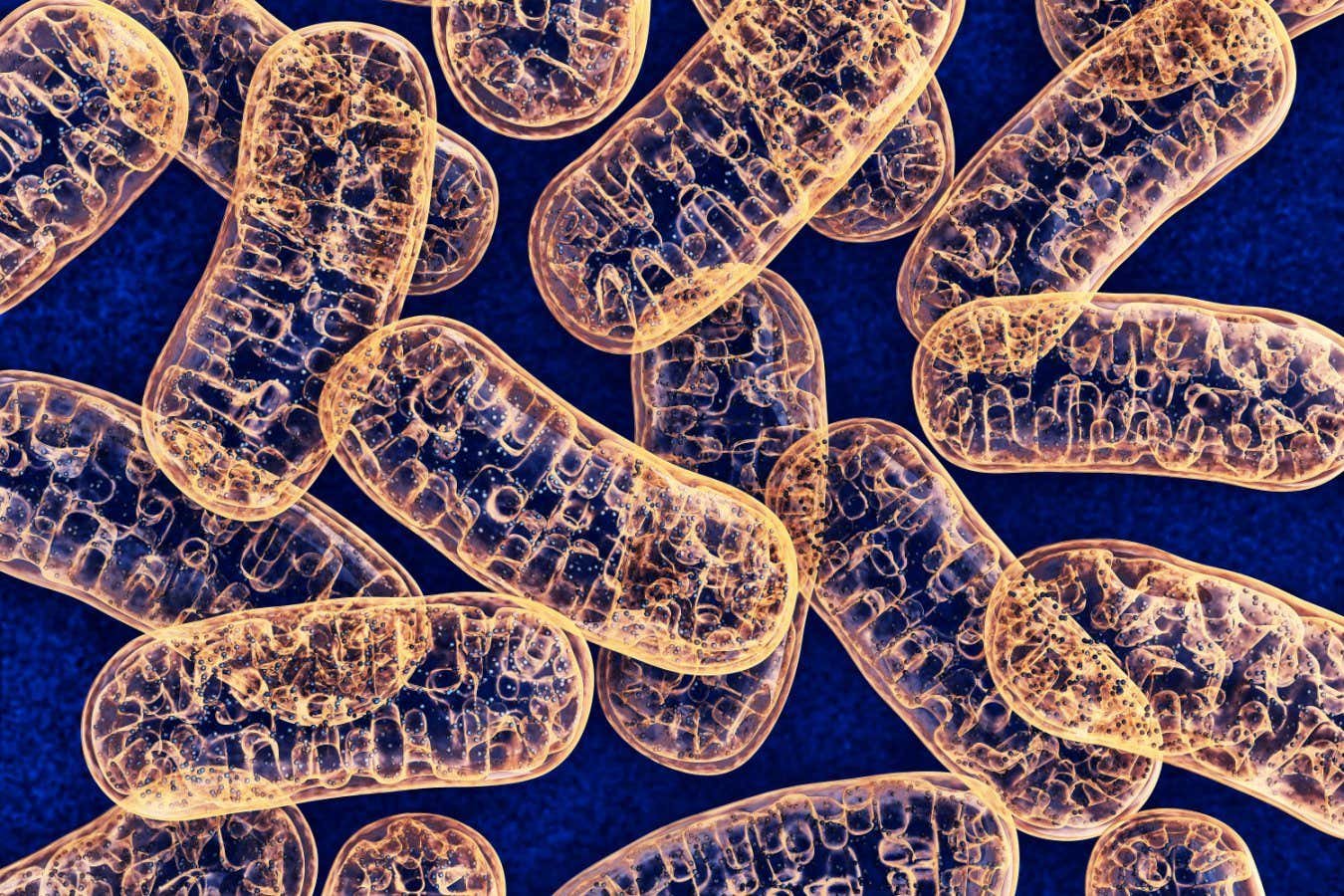
Pieces of mitochondrial DNA can get added to the main genome of cells
wir0man/Getty Images
Mutations that involve DNA from energy-producing mitochondria being mistakenly added to the main genome of cells were thought to be exceedingly rare. Now, a study of brain tissue shows these mutations are happening inside all of us, and the number of them could be a factor in ageing.
“Not only are they present, but they’re present a lot more in the dorsal lateral prefrontal cortex, which is a region of the brain associated with cognitive ability,” says Ryan Mills at the University of Michigan.
In every human cell, almost all the DNA – around 6 billion letters of it – is found within the nucleus. But the energy-generating organelles called mitochondria have their own tiny genome, at around 16,600 letters long.
That is because mitochondria were once free-living bacteria with a larger genome of their own. Over the 2 billion or so years since those bacteria formed a symbiotic relationship with our distant ancestor, most of the original bacterial genome has either been lost or transferred to the main genome in the nucleus.
Because of the evidence for this transfer, biologists have long known it must be possible for pieces of mitochondrial DNA to somehow get into the nucleus and then get added to the main genome. Yet it was assumed this kind of mutation was very rare, says Mills. In the past few years, studies by his team and others have shown that it is much less unusual than we thought, at least in cancerous cells.
Now, Mills and his colleagues have shown that this kind of mutation also happens in non-cancerous cells. The team analysed DNA sequences from samples of brain tissue taken from 1200 people during post-mortem examinations.
The sampling and sequencing was done by another team, but Mills and his colleagues looked for any mutations involving mitochondrial DNA being added to the nuclear genome. “We were just curious,” says Mills.
Not only did they find such mutations, they also saw that they were more common, on average, in people who died younger.
Whether these mutations are just a sign of ageing or one of its causes isn’t clear, says Mills. “The jury is still very much out,” he says. “But it’s hard for me to believe that if you take an entire mitochondrial sequence and you plop it somewhere in the genome, that it may not have an effect.”
Topics:








